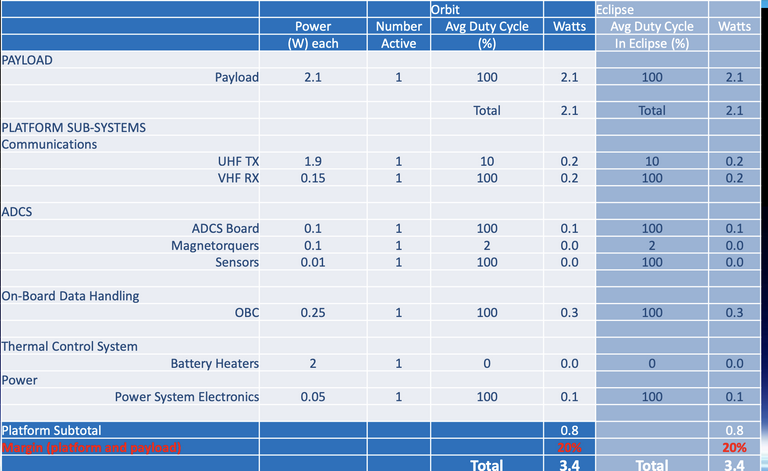Elon Musk recently sent Bitcoin into a tailspin after dropping it as a form of payment for Tesla because he discovered how unbelievably wasteful it is on power consumption. Bitcoin consumes more power than Argentina. Ethereum isn't much better. Any mining based blockchain burns power like it's going out of style.

However, blockchains using Delegated Proof of Stake (DPOS), such as BitShares, EOS, BEOS, and Sovereign Sky's new SKYEOS, just sip power. We can run both BEOS and SKYEOS on the power consumed by a single family home. Putting both chains in space running entirely on solar power means BEOS and SKYEOS will have zero carbon footprint.
Typical Large Scale Satellite
Today's satellites are frugal with power, which is usually supplied by arrays of solar cells. A typical communications satellite needs between 1 and 1.5 kilowatts of electricity, and the space shuttle manages on 12.5 kilowatts.
Tiangong 2 was built in Beijing Space City and launched on 15th September, 2015 from the Jiuguan Satellite Launch Centre aboard a Long March 2 rocket.
Its solar panels were folded up for launch and then deployed once the spacecraft was in orbit. Two wings extend from either side of the spacecraft. Each wing is comprised of four solar panels made up of gallium-arsenide solar cells. Each wing has an area of around 30 m2, so the total area of the solar generating panels is equivalent to about two thirds of the goal area on a soccer pitch. The panels can be tilted to present the maximum possible area to the sun. The power generated by a solar panel is directly proportional to the intensity of sunlight falling on it, so it makes sense to maximise that area by tilting the panels to be as close as possible to perpendicular to the sun. The panels can generate up to 6 kW of DC power when fully illuminated. Power is generated at 100 V and then stepped-down to 28 V and 12 V with DC-DC converters to power the various sub-systems and equipment within the laboratory.
Over the course of one orbit, the average power generated a little less than half of the maximum value, around 2.5 kW. The spacecraft must spend some part of its orbit in the Earth’s shadow, and for that time there will be no solar generation. So a considerable proportion of the generated electricity must be stored in batteries. These batteries are 40 Amp-hour nickel-metal hydride units.
Let’s think about what 2.5 kW of generated power actually means. A desk top computer back at mission control might consume 250 W of power, that’s one tenth of the average power generated in one orbit.
Assuming that a 250W processor has enough horsepower to operate one of our BEOS nodes, we should have enough.power on a satellite the size of Tiangong 2 to operate up to 8 nodes with 500 watts left over for housekeeping systems.
Or if we only put one node per satellite, we could get by with 8 times smaller solar array than Tiangong 2.
A full blockchain would require 21 nodes, or 5250 watts of power.
Smaller Cubesats
Cubesats have much less power - only 2.1 watts to run our single processor payload. This is probably too small for our application. Here's a power budget for a typical cubesat.

Ground Based Solutions
The average home in the U.S. uses 10,400 kWh of electricity per year. If you install the average 250-watt solar panel, you'd need around 28-34 solar panels to generate enough energy to power your entire home. At 250 watts per processing node, a solar panel system sized to power one home could power 40 processors or enough for two complete BEOS blockchains.
BEOS nodes located in separate locations could be powered with just two solar panels per node or a single home sized array could sell it’s power into the grid to offset all 42 nodes drawing from the grid anywhere in the world.
A small windmill generator puts out 1 megawatt of power into the grid, which would offset the power requirements of 200 BEOS blockchains.
+5%
This is fantastic... :)
I am curious:
Could BEOS be used as a transparent second layer protocol?
While I am worse than a "sorcerer's apprentice" in these matters, what I imagine is some kind of DAO/smart contract running on a BEOS blockchain with the following capabilities:
Of course, when Central American countries start adopting it, more of us will be directly transacting in BEOS...
Thanks for more insight into the burgeoning BEOS ecosystem!
😄😇😉
